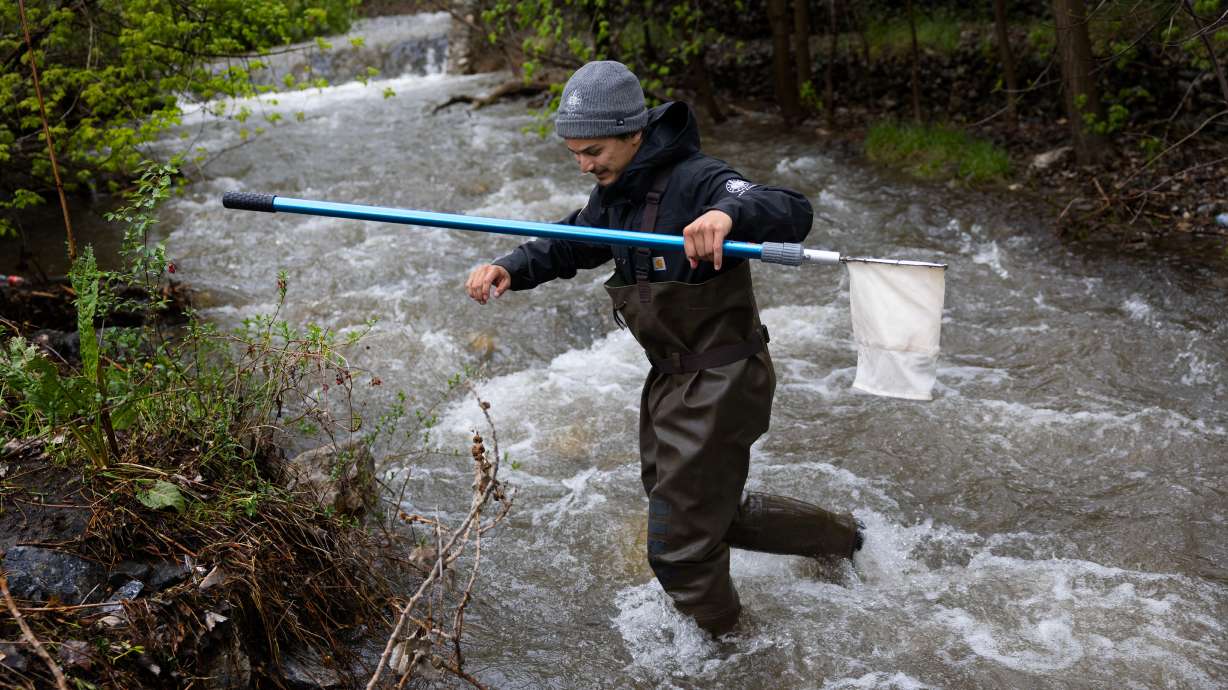Estimated read time: 3-4 minutes
This archived news story is available only for your personal, non-commercial use. Information in the story may be outdated or superseded by additional information. Reading or replaying the story in its archived form does not constitute a republication of the story.
SALT LAKE CITY — Utah has been flirting with hope because a couple of good winters may mean conditions are looking up in terms of water availability, but it does not mean the state has escaped a hatchet move when it comes to a relentless drought that has held residents in defensive mode for more than two decades.
There is good news and bad news. Much of the state, as of mid-May, is escaping the immediate drought conditions.
But according to a briefing Tuesday in a webinar called the Intermountain West Drought and Climate Outlook, Utah can look forward to hotter than normal summer temperatures from June through August.
Hosted by the National Atmospheric and Oceanic Administration and the National Drought Integrated Drought Information System, the briefing combined a reason for hope for optimism and the reality of climate.
Jon Meyer, with the Utah Climate Center at Utah State University, alternately painted a reason for relief and a precautionary tale about how easily things can change — particularly for Utah and the Intermountain West and Pacific Northwest.
The drought particularly impacts the Four Corners region, roping in Colorado, Arizona, New Mexico and Utah, which may be in a particular struggle as the months progress.
Conversely, the bulk of Utah in its current conditions were highlighted in blue — a good thing — but as conditions persist over the summer, rangeland conditions could change. That means impacts to growing seasons, and available forage for rangeland and ranching. And maybe the water for your lawn.
"The long-term hydrologic drought is continuing to stress the vegetative landscape, whether that be farmland and rangeland or natural forests, wetlands, so a lot of the Four Corners area in eastern Utah, western Utah, northern Arizona, western New Mexico are experiencing the greatest vegetation impacts from drought so we do see impacts popping up into the farmlands in eastern Colorado as well," Meyer said.
Meyer said that, ironically, the high soil moisture content the state has been afforded may delay the onset of the annual monsoon season, badly needed in a time of year when it is dry, extremely hot and landscapes and farmland are parched. The monsoon season typically hits in July or early August.
If you look at the current map of drought conditions of the Western United States released by the U.S. Drought Monitor, it shows Utah in pretty good shape — for now.
But Meyer said hydrological conditions can change quickly and, like a sleight of hand in a high-stakes game, quickly turn things around.
The Pacific Northwest has it worse than us, as does Arizona and New Mexico.
In Utah, water managers are holding on to reservoir storage as must as possible, alternately making room for coming snowmelt and hanging onto critical water supplies moving forward.
The Utah Division of Water Resources describes drought as a "creeping disaster." So even though Utah might look like it is in relatively good shape when it comes to our conditions, drought is at the door looking for an opportunity to move in, which we seem powerless to stop.
But like burglars, you can take precautions to protect your home and the future of your children, grandchildren and those who come after. Be vigilant. Sound the alarm. Your household cannot be taken for granted, and that is Utah and your water supply.










